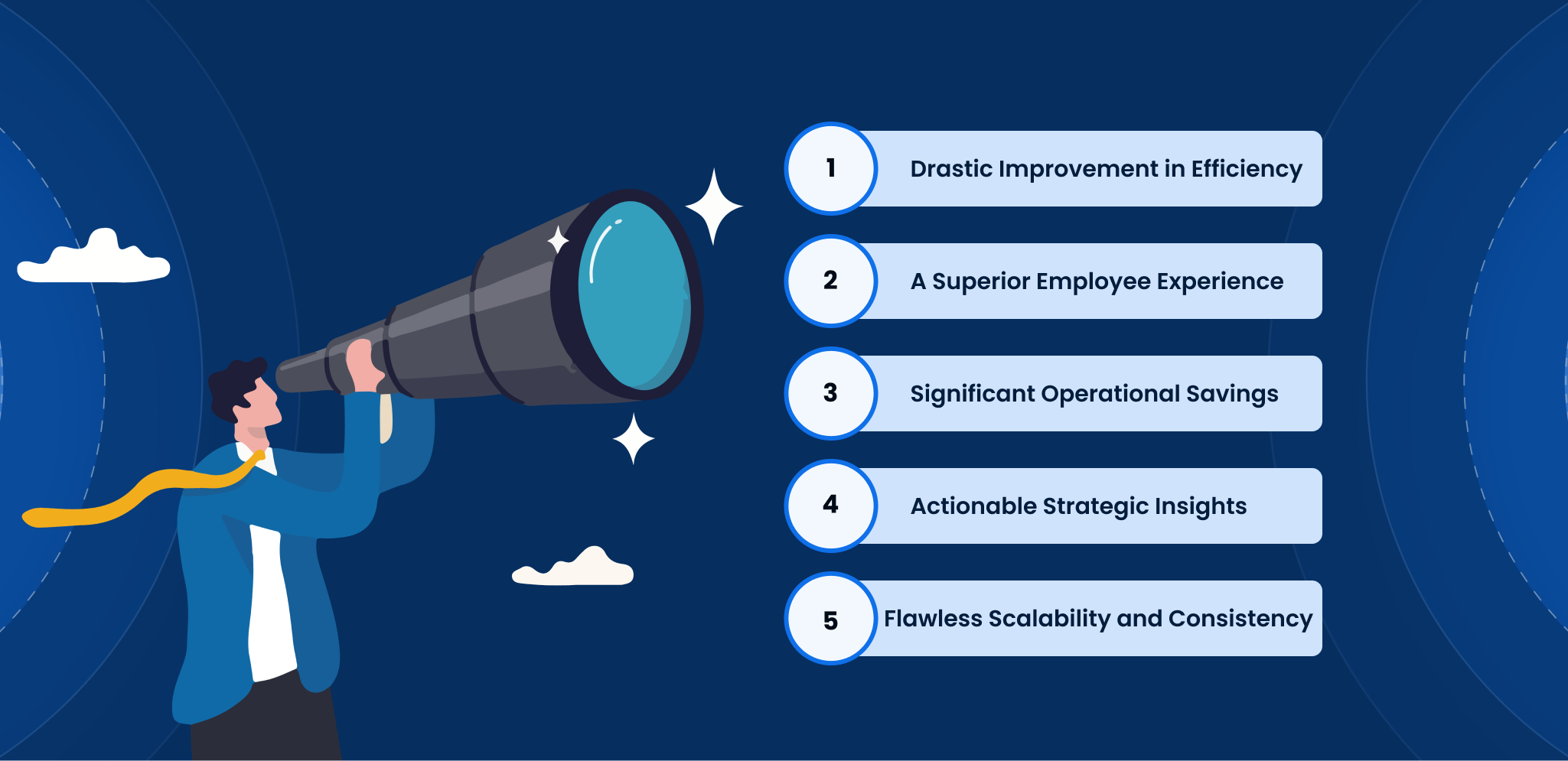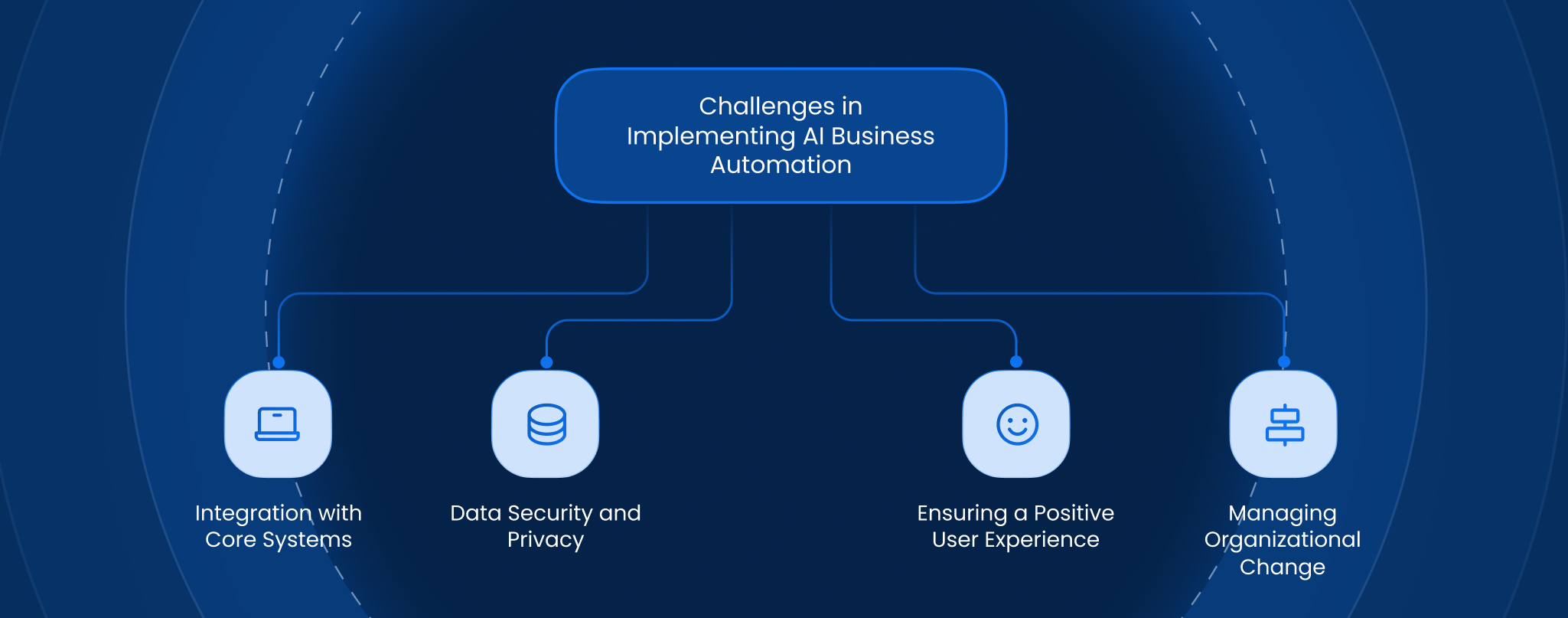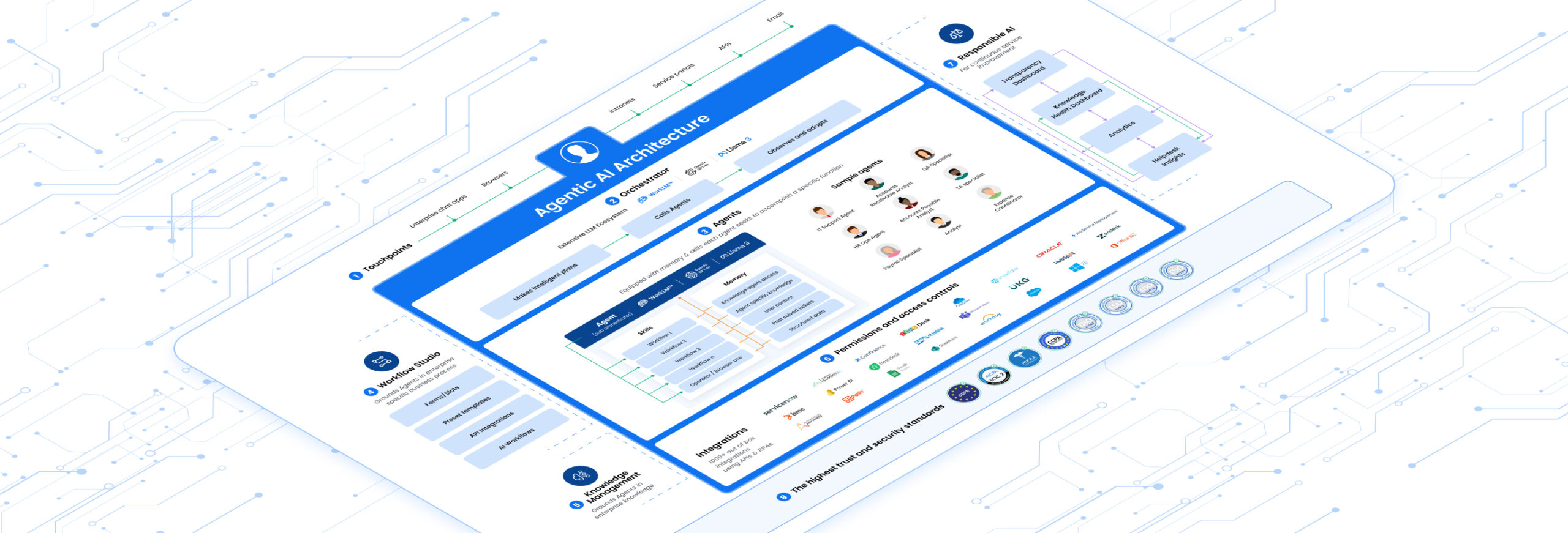Introduction
As a technology leader, you are at the helm of navigating your company through constant change, tasked with boosting efficiency while fostering innovation. The conversation around AI business automation has evolved far beyond a simple buzzword; it is now the cornerstone of a modern enterprise strategy. In 2025, the goal is no longer just about automating tasks but about creating an autonomous, intelligent ecosystem that empowers your employees. True AI business automation allows your most valuable assets, your people, to shift their focus from repetitive operational chores to the high-impact, strategic work that drives your company forward.
What is AI Business Automation?
At its heart, AI business automation uses intelligent software to perform complex tasks that historically required human judgment and reasoning. It’s a significant leap from traditional automation, which typically follows rigid, pre-programmed rules. Think of traditional automation as a train on a track, it’s efficient but can only go where the track leads. In contrast, AI business automation is like a self-driving car; it perceives its environment, makes real-time decisions, and navigates complex routes to reach a destination. It involves systems that learn from data, understand context, and adapt their actions to achieve business outcomes across departments like IT, HR, and Finance. This sophisticated approach is what makes modern AI business automation so transformative.
How AI Business Automation Works
The power of AI business automation comes from a fusion of advanced technologies working in concert. It begins with Natural Language Processing (NLP), which allows the AI to understand human language in tickets, emails, or chat messages with remarkable accuracy. Subsequently, machine learning algorithms enable the system to analyze vast amounts of data, recognize patterns, and continuously improve its performance with every interaction. This learning capability is crucial for effective AI business automation.
Finally, these intelligent systems integrate with your existing software stack to take action. When an employee in Chicago reports that they can’t access a specific sales application, the AI business automation platform doesn’t just create a ticket. Instead, it:
-
Understands the request and identifies the user and the application.
-
Analyzes the situation by checking the user’s permissions in your identity management system and checking the application’s server status.
-
Acts on its findings, perhaps by re-provisioning the user’s access or identifying a known outage.
-
Communicates the resolution directly back to the employee, closing the loop in minutes, not hours.
Key Benefits of AI Business Automation for Enterprises
Adopting a robust AI business automation strategy delivers compounding value that directly impacts both your balance sheet and your company culture.
- Drastic Improvement in Efficiency: By autonomously handling a high volume of routine requests, your skilled IT and HR professionals are liberated. Consequently, they can focus on strategic projects, system improvements, and complex problem-solving.
- A Superior Employee Experience: In today’s competitive talent market, the quality of internal support is a key differentiator. AI business automation provides employees with instant, 24/7 resolutions, eliminating frustrating wait times and allowing them to stay productive and engaged.
- Significant Operational Savings: The financial case for AI business automation is compelling. It reduces the cost per ticket, minimizes the need for scaling support staff during growth periods, and prevents productivity losses caused by internal service delays.
- Actionable Strategic Insights: Every automated interaction creates a data point. Over time, your AI business automation platform becomes a source of invaluable intelligence, revealing systemic issues, identifying trends in employee needs, and highlighting opportunities for process improvements.
- Flawless Scalability and Consistency: AI agents handle fluctuating request volumes without a drop in performance. Whether it’s the first day of open enrollment or a company-wide software update, the level of service remains consistently high and error-free.

Common Use Cases of AI Business Automation
The application of AI business automation spans the entire enterprise, streamlining critical support functions.
- For IT Departments: Imagine autonomously handling password resets, software provisioning, VPN troubleshooting, hardware requests, and managing application access without a single manual touch.
- For HR Teams: Effortlessly answer frequent questions about payroll, benefits, company policies, and leave balances. You can also automate significant parts of the employee onboarding and offboarding processes.
- For Finance Departments: Instantly respond to inquiries about expense report status, vendor payments, and purchase order approvals, ensuring operations run smoothly.
Challenges in Implementing AI Business Automation
Transitioning to an AI-powered model is a strategic move that requires careful planning. As a technology leader, you’re right to consider the potential hurdles.
- Integration with Core Systems: A new solution must seamlessly connect with your existing systems of record, like ServiceNow, Workday, or your internal databases. A rip-and-replace approach is simply not feasible.
- Data Security and Privacy: When you empower an AI to act, you must have absolute confidence in its security protocols to protect sensitive employee and company data.
- Ensuring a Positive User Experience: The automation must be intelligent and intuitive. A poorly designed AI can create more frustration than it resolves, leading to low adoption.
- Managing Organizational Change: The role of your support teams will evolve. Implementing AI business automation requires a clear strategy for upskilling your staff, transitioning them from frontline responders to strategic problem-solvers and AI supervisors.

How Leena AI Supports Business Automation with Agentic AI
At Leena AI, we believe the next frontier of AI business automation lies with Agentic AI. This isn’t just about chatbots that answer questions; it’s about deploying autonomous AI Agents that take action and execute tasks from end to end. Our platform was built to address the very challenges technology leaders face.
Our AI Agents are designed for the enterprise, integrating securely with over 100 of the most common business applications. For instance, our “Autonomous IT Support” solution doesn’t just tell an employee how to get access to a software license; it orchestrates the entire workflow. The AI Agent receives the request in Microsoft Teams, understands the user’s role, verifies manager approval, logs into the license management system to provision access, and then confirms with the employee once the task is complete.
This is the power of Agentic AI, it resolves complex, multi-step issues autonomously, turning your service desk into a proactive, efficient, and intelligent operation. This is the future of AI business automation in action today.
The Future of AI Business Automation
Looking ahead, the trajectory of AI business automation is incredibly exciting. The focus is shifting from simply reactive automation to creating a truly proactive and predictive support ecosystem. Imagine your systems identifying and fixing a server issue before any employee even notices a problem. Furthermore, we are moving toward hyper-personalization, where the AI understands the context of each employee, their role, their location, their current projects, to provide a uniquely tailored support experience. Ultimately, the goal is a fully autonomous service desk, where human experts are reserved for the most creative, strategic, and complex challenges. This evolution will fundamentally redefine what is possible in enterprise operations.
Frequently Asked Questions (FAQs)
What is the first step to implementing AI business automation?
The best first step is to identify high-volume, repetitive tasks within a specific department, like IT password resets or HR policy questions. Starting with a clear use case allows you to demonstrate value quickly and build momentum for your AI business automation initiative.
How does AI business automation differ from traditional Robotic Process Automation (RPA)?
RPA is designed to mimic human actions for structured, rule-based tasks. AI business automation, on the other hand, handles unstructured data and complex processes that require cognitive capabilities like understanding language, learning from patterns, and making decisions.
Can AI business automation integrate with our existing ticketing systems like ServiceNow or Jira?
Absolutely. Modern AI business automation platforms are built with integration in mind. They act as an intelligent layer on top of your existing systems, enhancing their capabilities without requiring a full replacement.
How do you ensure the security of data used in AI business automation?
Enterprise-grade platforms use multiple layers of security, including data encryption, secure integrations, and strict access controls. It is crucial to choose a vendor that is compliant with international security standards like SOC 2 and ISO 27001 to protect your sensitive data.
What impact will AI business automation have on my current IT support staff?
It empowers them. By handling the routine and repetitive tickets, AI business automation frees up your support staff to focus on higher-value work, such as managing complex incidents, improving systems, and driving strategic IT projects.
How do you measure the return on investment (ROI) of an AI business automation project?
ROI is measured through a combination of “hard” savings (e.g., reduced cost per ticket, lower operational overhead) and “soft” benefits (e.g., improved employee productivity, higher employee satisfaction, and faster service delivery).
Is AI business automation suitable for departments other than IT?
Yes. The principles of AI business automation are highly effective for any department with a high volume of internal inquiries, including HR, Finance, Legal, and Facilities, to create a unified and efficient employee service experience.













